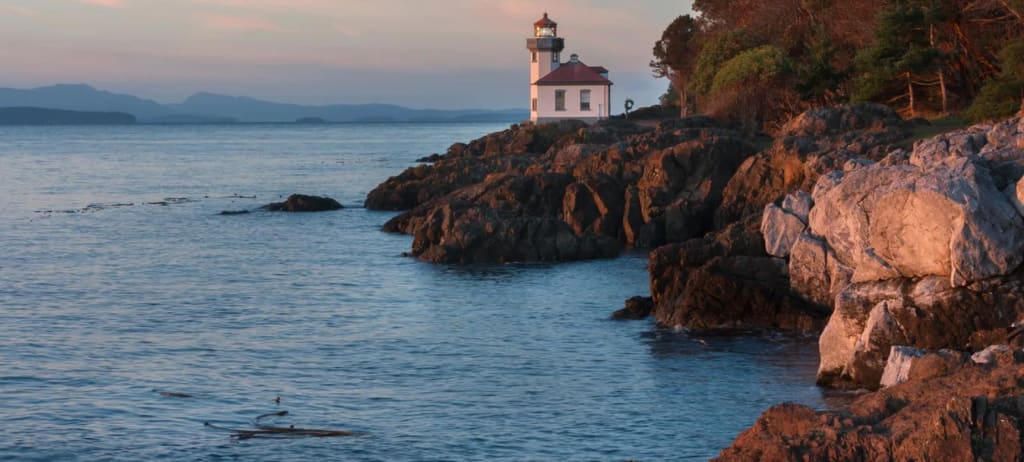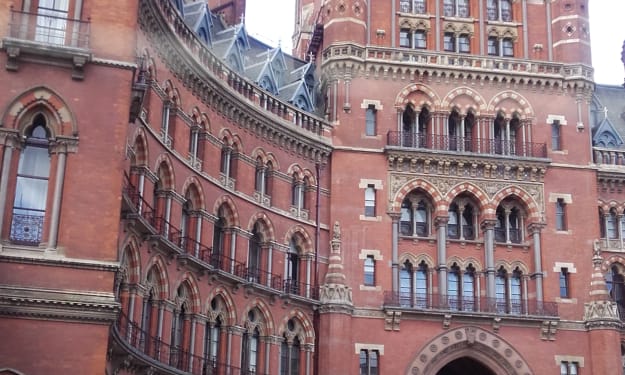
Crisscrossed by pastoral fields and dotted with handsome wooden barns, San Juan Island – the second largest of the San Juan Islands in north-western Washington state – is a quiet, unhurried place. Orca whales breach in the surrounding waters and the southern shore of Canada's Vancouver Island glimmers less than seven miles to the west. It's hard to believe that in this isolated corner of the US, in 1859, the British and the Americans nearly went to war over a dead pig.
The trouble originated in a border dispute. In 1846, the Oregon Treaty established the 49th parallel as the official frontier between British and American territories in the Pacific Northwest, but made an exception for Vancouver Island, which, despite dipping below the 49th parallel, was allowed to remain British. This western kink in the border was, in the wording of the treaty, to be demarcated by the "middle of the channel which separates the continent from Vancouver's Island". But as the waters of the Salish Sea contained scores of small islands and several different channels, no one could agree which one marked the true border.
Occupying a region claimed by both nations, San Juan Island suddenly found itself at the epicentre of a serious diplomatic crisis.
There was little to disturb the peace nearly two centuries later, as I pedalled south on a hired bicycle from the island's only settlement, Friday Harbor. It was a warm, sultry day in July and I was heading for American Camp, part of a National Historical Park dedicated to the so-called "Pig War". Several weeks previously, the park had opened a new visitor centre and I was curious to find out how the demise of a hapless boar had nearly sparked an international conflict.

American Camp lies on the island's southernmost point, six miles south of Friday Harbor, on a smooth and gently undulating road through mixed farmland lined with bushy hedgerows.
Farming was first established on San Juan Island in 1853 when the British-run Hudson's Bay Company founded the Belle Vue Sheep Farm with the aim of gaining a foothold in the region and thwarting rival American claims in the San Juan archipelago. When the business became profitable, the Americans decided they too wanted a slice of the pie and, within five years, more than a dozen US settlers had sailed over from the mainland to claim grazing rights – applications the British deemed illegal.
Tensions simmered beneath the surface until 15 June 1859, when an American settler named Lyman Cutlar angrily shot a pig he found foraging in his garden. Fatefully, the offending animal belonged to the British, who were so incensed by the incident they threatened to evict American settlers en masse.
Undaunted, the Americans asked for military protection. Answering the call, Captain George Pickett (who later fought for the confederacy in the US Civil War) was dispatched to the island, landing with a 64-man force near present-day American Camp on 27 July.
The British responded by sending three warships to the area, as Pickett ratcheted up his troops to 450. Raising the stakes further, the British started conducting live drills on San Juan Island as ships, field guns and marines faced each other in a tense military stand-off.
Back in the peaceful present, I freewheeled into American Camp and paused to admire the plush new wood-and-glass visitor centre. Outside, graphic panels displayed maps and indigenous motifs, while indoors, pictures and stories explained the trajectory of the crisis from Cutlar's fatal shooting to the brink of conflict. So how close were the two great powers to war?

"Frightfully close," said Cyrus Forman, an interpretive ranger at the park. "Governor James Douglas, the royal authority in British Columbia, ordered the Royal Navy to fire on any Americans who reinforced George Pickett's initial forces. [British] Captain James Prevost contemplated carrying out those orders but hesitated when he actually saw Americans landing."
When news of the "Pig War" reached faraway Washington DC in October 1859, President Buchanan sent senior emissaries on the long journey west to try to put an end to the dispute. Their arrival quickly helped to mitigate the tension, and military action was ultimately avoided in favour of a truce.
"Two men are most credited with averting war," explained Forman. "Admiral Lambert Baynes, commander of Royal Navy forces in the Pacific, who refused to engage in any hostilities despite intense pressure from Governor Douglas and the British Columbia legislature; and General Winfield Scott, who travelled from New York City to the San Juans, where he forged a joint occupation agreement that enabled both sides to amicably occupy San Juan Island for 12 years while the diplomatic process played out."

Opened in June 2022, the new visitor centre does an excellent job of describing the diplomatic vagaries of the dispute while reframing its historical context. For years, popular narratives about the "Pig War" had emphasised British and American antagonisms but failed to properly acknowledge another key part of the story: the lives of the island's Coast Salish indigenous people who inhabited the Pacific Northwest for thousands of years before Europeans arrived. The arbitrary border drawn across their land during the crisis displaced Native tribes and had a huge impact on their culture and livelihoods.
Our goal was to create a facility fitting of this extraordinarily special place – to honour the richness of cultures past, present and future
New exhibits include a detailed mural depicting scenes of pre-settlement Coast Salish life and a splendid Native canoe suspended from the ceiling, the work of Lummi Nation carver Dean Washington.
"Our goal was to create a facility fitting of this extraordinarily special place – to honour the richness of cultures past, present and future," explained park superintendent Elexis Fredy of the centre's conception and new exhibits. "From the outset of our project, we were committed to ensuring that the depth and complexity of the park was celebrated."
The project was planned in direct collaboration with Coast Salish Tribes, and seven intricately decorated canoe paddles, each from a different tribe, are displayed in front of the mural.
The joint occupation of San Juan Island lasted from 1859 to 1872, during which time British and US troops peacefully coexisted in separate camps at either end of the island. Relations between them quickly transitioned from frosty to cordial.

Leaving the visitor centre, I set out to explore American Camp and the remnants of the military base that took root after the 1859 truce. More than a dozen buildings once stood on the site. Only three remain. Navigating along open, windswept paths through rolling tracts of grassland, I passed two erstwhile officer's quarters surrounded by a white picket fence and gazed at Canada across the once contentious Haro Strait. While there are few physical reminders of the encampment, a series of strategically placed signboards help bring the history to life. To the south, a path climbed to an earthwork redoubt and other trails fanned out to beaches, bluffs and a lighthouse. In contrast to the rest of the island, the park harbours an unusual scrub-prairie ecosystem, and it's home to the only remaining population of the extremely rare Island Marble butterfly.
Walk completed, I coaxed my bike 13 miles along winding coastal roads to English Camp, the park's other campus on the island's north-west shore. Nestled next to a sheltered bay and surrounded by mixed woodland, the landscape was very different to the blustery plains of American Camp. Of the two bases, English Camp was considered more deluxe. Officers were quartered in neat wooden houses on a hillside, with a formal English garden below. The quarters are long gone but the garden remains, along with a small blockhouse fortification and a white clapboard barracks building. A military road once ran between the two camps, which a local trail committee is currently trying to revive.
Post 1859, the Americans and British haggled for more than a decade to find a satisfactory resolution to the boundary dispute. "Ultimately, they decided that given the intractability of their positions they needed to have a binding arbitration conducted by a neutral arbitrator," Forman told me.
Kaiser Wilhelm of Germany was hired as a referee and invited to choose between two different sea channels as the potential frontier: the Haro Strait preferred by the Americans, or the Rosario Strait preferred by the British. Ultimately, he opted in favour of the Haro Strait, and, in September 1872, British marines packed their bags as San Juan Island and its neighbouring islands were peacefully handed over to the United States.

As I prepared to pedal back to Friday Harbor, I cast a final glance over English Camp where the Union Flag still flies in a nod to historical tradition.
Today, 150 years since the resolution of the dispute in 1872, it's easy to make light of a "conflict" where the only victim was a pig. But, had war broken out, the overall cost to both nations could have been huge. Thankfully, cool heads prevailed, and today San Juan Island's historical park stands as a reminder that war – even one started by a farm animal – can be prevented.
About the Creator
Iturospee
As the eagle soars in the sky, it teaches that courage and boldness, vision and action, are the most important elements of success.






Comments
There are no comments for this story
Be the first to respond and start the conversation.